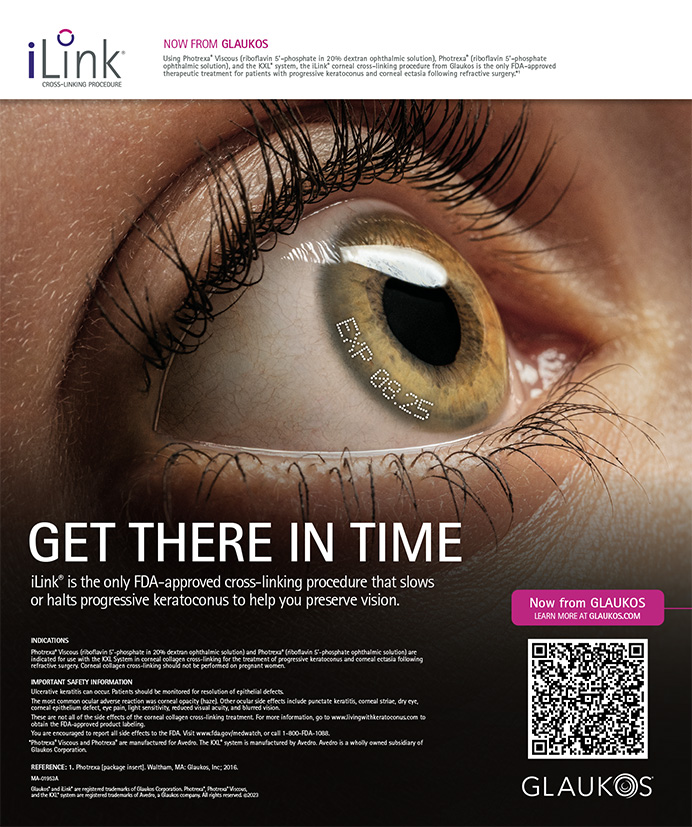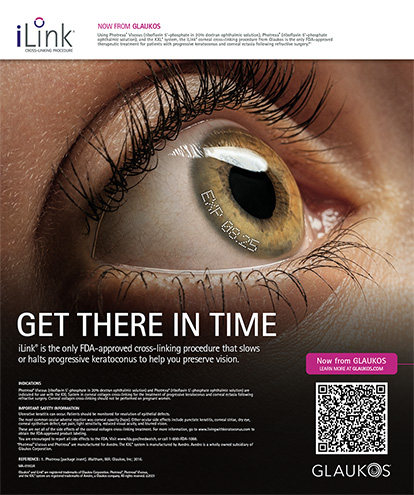In April 2001, we began the first US wavefront-guided customized ablations using the VISX WaveScan Wavefront System. This study presents the results of our 6-month data on a group of low myopes that we treated at the Kraff Institute in Chicago, Illinois. We now have available data on 19 patients; there was no nomogram adjustment on any of these patients, and the target was emmetropia. The mean patient age was 34 years +/-7 years, the mean cylinder was 0.3, and the spherical equivalent was -1.7.
In this study, WaveScan measurements were taken on each patient. Treatment tables were then calculated based on these measurements, and a PreVue lens was created. As a component of the WaveScan system, the PreVue lens is just what its name implies. It is a means by which patients can see the type of result that they can expect with the treatment. The laser creates the PreVue lens from information gathered on the WaveScan system, and ablates it onto a plastic lens. By looking through this lens, patients can see with the equivalent of their new vision prior to surgery.
In order to be included in this study, patients had to be able to read a minimum of three letters on the 20/16 line with the PreVue lens. The patients were then treated with the WaveScan-guided ablations.Our results at 1, 3, and 6 months have been consistent. At the 6-month follow up visit, about 25% of our patients saw 20/12 or better uncorrected visual acuity (UCVA), 74% saw 20/16 or better UCVA, and 100% of our patients had 20/20 or better UCVA. In addition, 58% of eyes had a postoperative UCVA better than their preoperative BSCVA at 6 months
. In summary, the results set a new standard; 74% of the patients had a UCVA of 20/16, and 100% of the patients had a manifest refractive spherical equivalent within .5 D and 90% within 0.25 D.HIGHER MYOPES
Preliminary 1-day and 1-week results are now available on ablations we performed on 14 bilateral eyes with higher refractive errors. The mean preoperative spherical equivalent was -4.9 D, while the mean postoperative SE was 0.9 D. At the first postoperative week, 67% of the patients had 20/16 UCVA or better, and 100% saw 20/20 UCVA or better.
A typical patient who we treated was a female who had a preoperative manifest refraction of -5.5 D, +2.75 D X 180 with a BCVA of 20/20. We treated the patient solely based on her WaveScan results, and at 1 week postoperatively, she had 20/16 UCVA with a plano result.
Colman Kraff, MD, is Clinical Instructor at the Northwestern University Medical School, and an attending physician at Northwestern Memorial Hospital and Veterans Administration Hospital in Chicago, Illinois. Material extracted from the VISX Refractive Society Symposium, November 11, 2001 at the AAO meeting in New Orleans, Louisiana. Dr. Kraff may be reached at (312) 444-1111; c.kraff@lx.netcom.com

